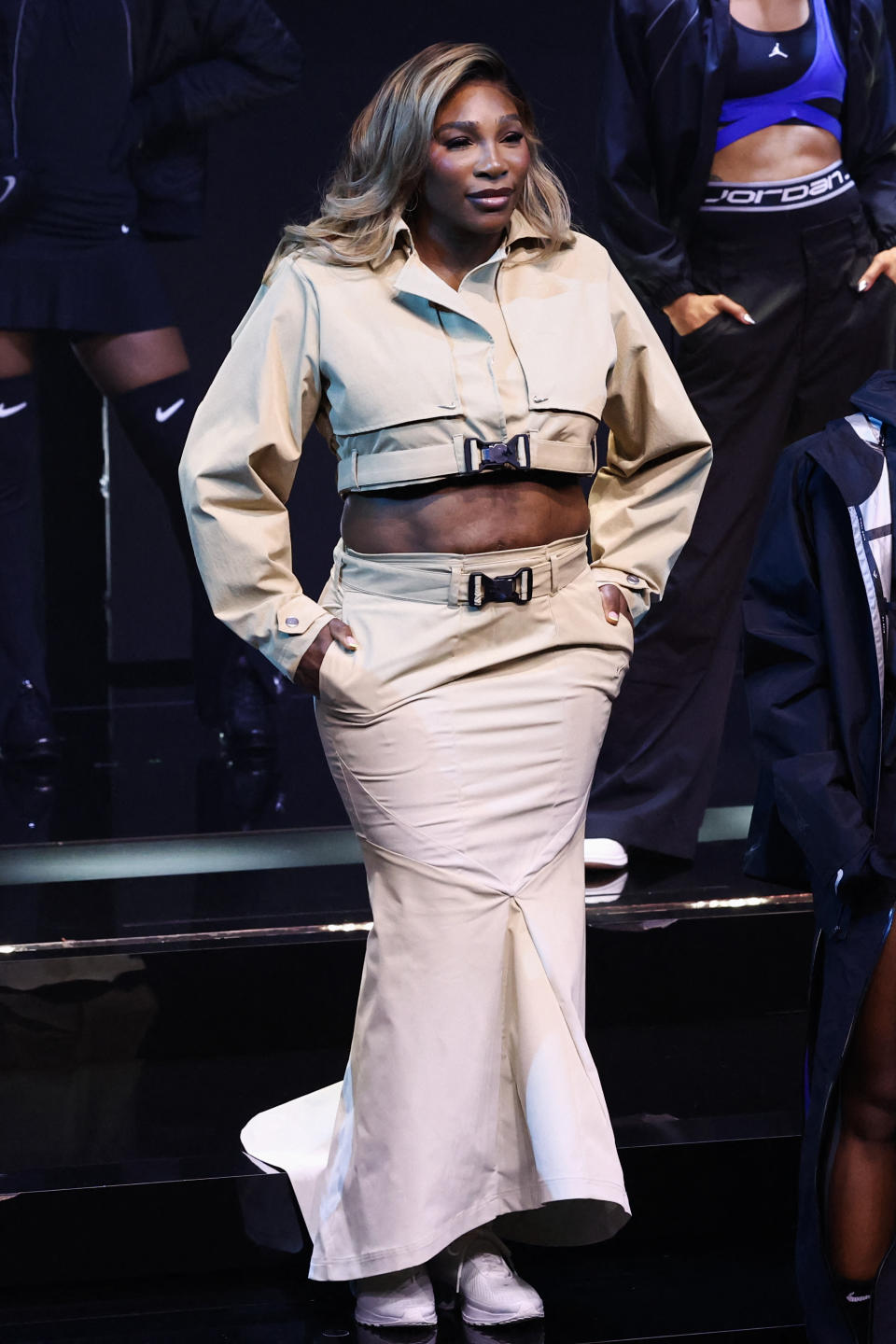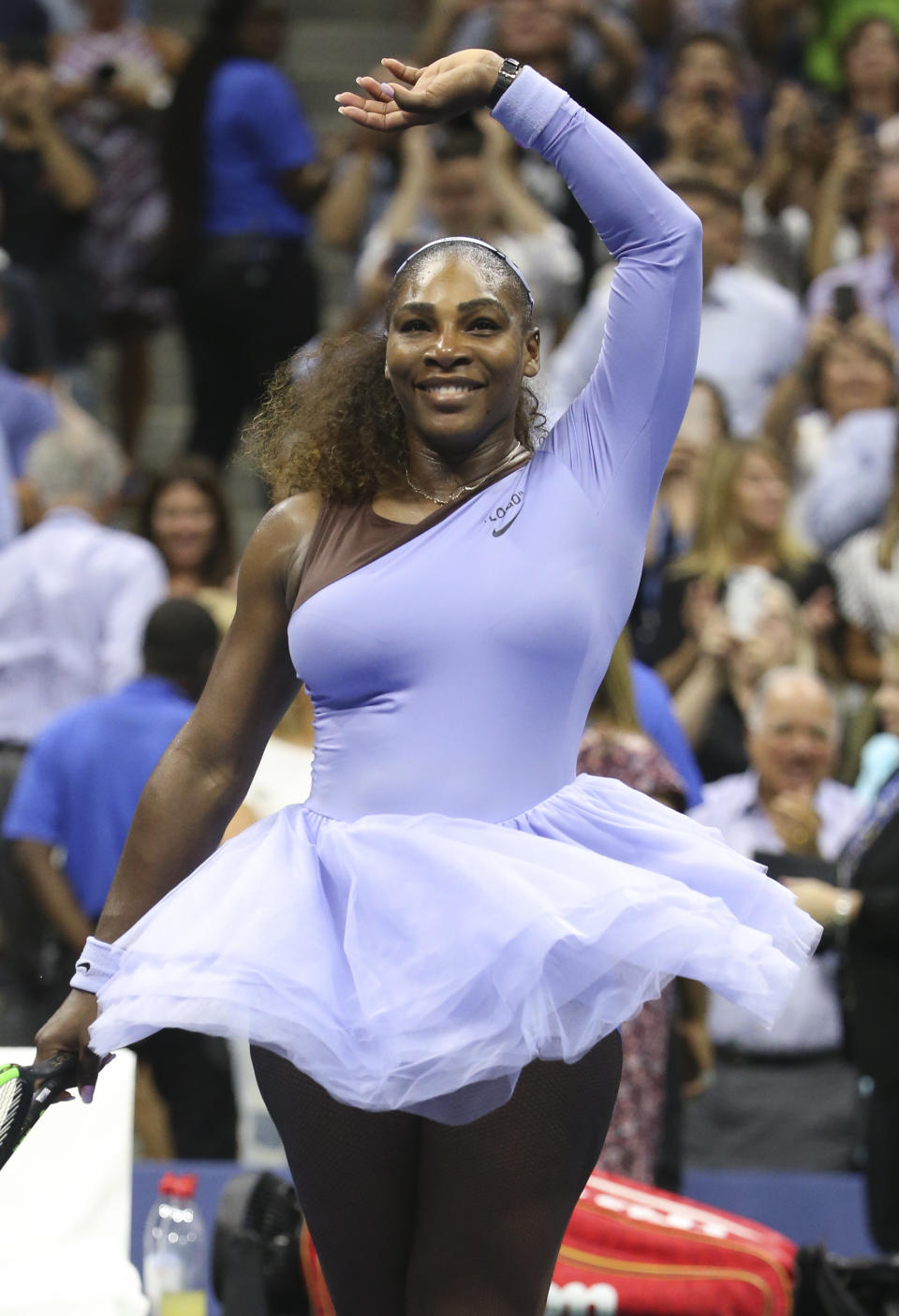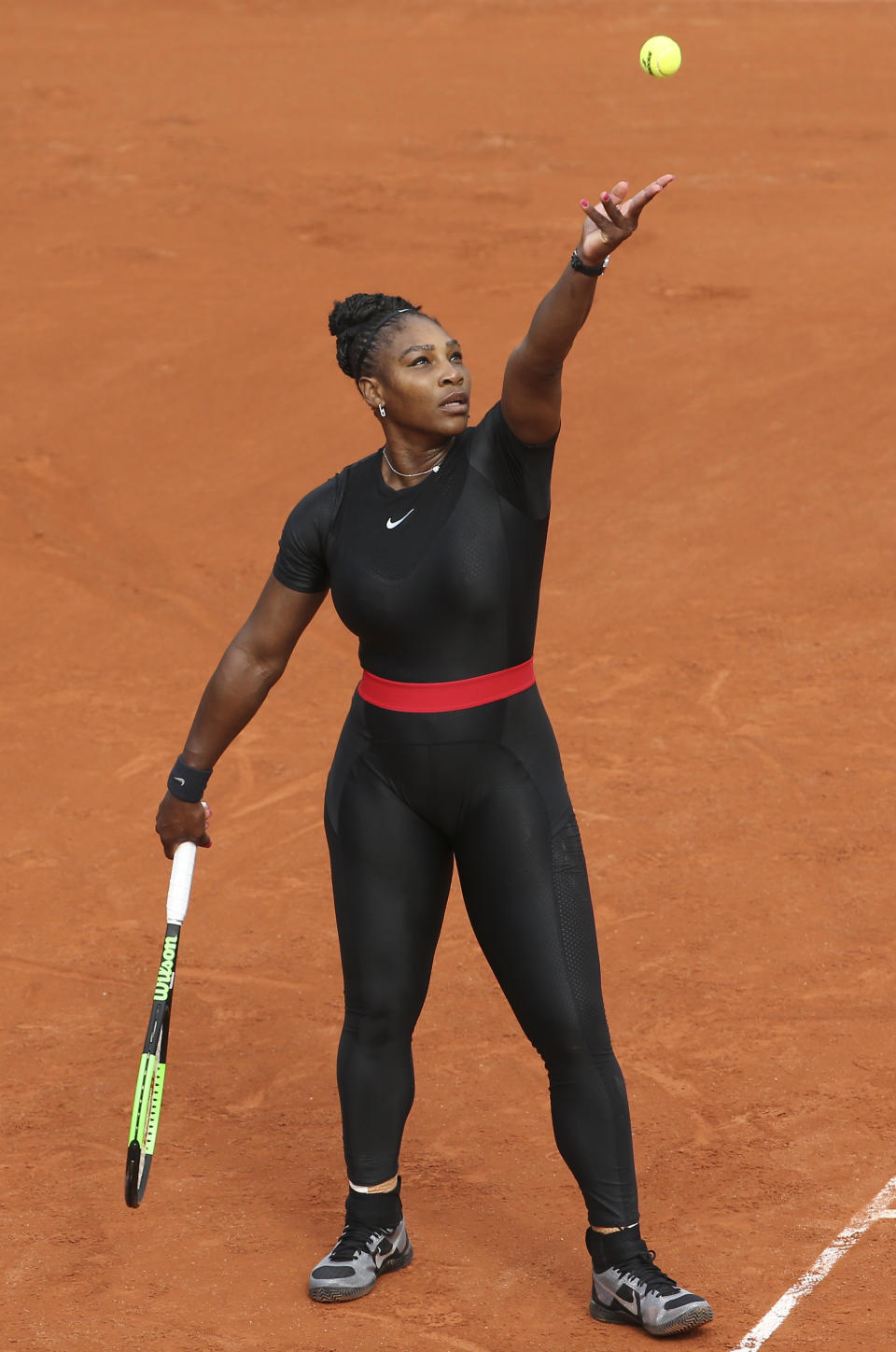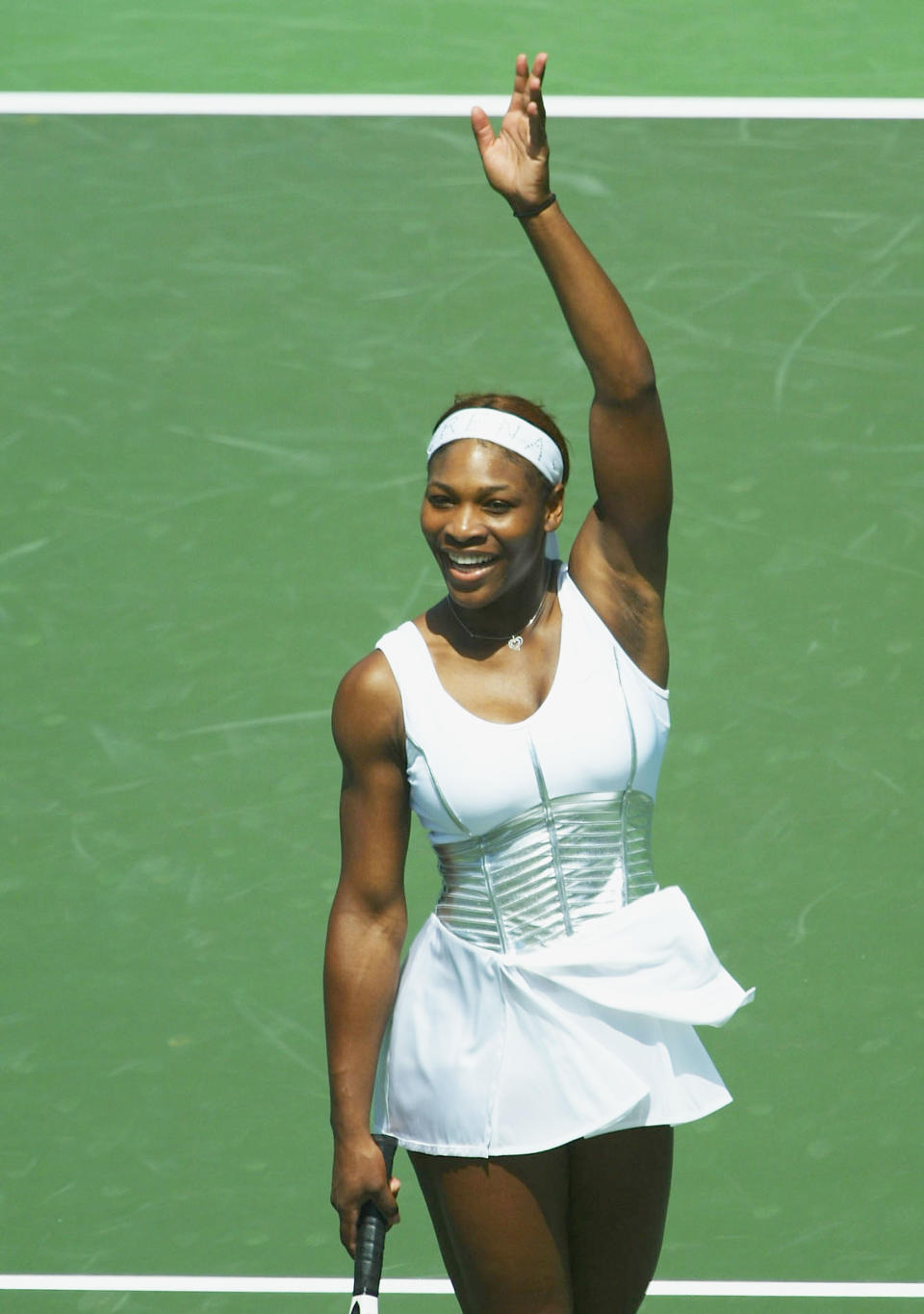How Serena Williams Transformed Tennis Fashion "Without Even Trying"

Tennis fashion is everywhere you look right now, from the polo shirts and pleated mini skirts on luxury runways to Zendaya's back-to-back-to-back red carpet serves on the Challengers press tour. Even when people aren't wearing Wimbledon white, they're thinking about it. Searches for "tennis fashion" have increased 80 percent in the past month, according to Data But Make It Fashion.
This rising interest isn't lost on Serena Williams, the greatest of all time where tennis and its dress codes are concerned. Before setting down her racket in 2022, Williams spent her 27-year career winning Grand Slam after Grand Slam in custom, convention-pushing outfits.
Back then, her fitted Nike dresses weren't common off the court. On the other side of retirement, "I feel that it's completely crossed over—and I've been trying to get that to cross over for a long time," she tells me.

Speaking with me at the Ritz Paris before walking the runway at Nike's Air Innovation Summit, Williams says she didn't set out to start a style revolution. But by wearing a black catsuit instead of a tennis dress, or swapping a starched white skirt for Y2k denim, she started a movement "without even trying."
"[S]eeing myself and my sister on the big stages of Wimbledon and the U.S. Open, being ourselves and wearing great outfits and looking our best, really changed women's sports—which is crazy," she says.
Williams set an example that athletes can bring their whole selves to their game: with or without makeup, in blinged-out uniforms or in functional, straightforward kits. The same mindset applies off the court. As a newly-minted beauty brand founder and the head of a venture capital fund, Williams still dresses in her favorite sport-inspired pieces. After all, tennis fashion was always a lifestyle for her—not a trend.
Ahead, Williams goes deep on the looks that transformed her career and how she's investing in the next generation of women's sports (and style).
Post-retirement, you've been investing in and mentoring up-and-coming talent. When you were still active in tennis, what was the first moment you felt like another athlete invested in you and your career?
I remember one person: Zina Garrison, who was a Black tennis player that I looked up to. [Venus and I] were under 10 and we went to Houston to meet her. First of all, that alone was a lot. If I were at the time she was in her career, it would have been very hard to set up a meeting with these two girls who were talking about making it.
But she spent time with us and she hit with us, too. And I remember thinking, Oh, I could beat her. (I couldn't even really hit with her—I was so little.) That always stuck with me. I was like, wow, that's really cool that she took out that time. I never forgot that.
Now, how are you paying it forward for other young women who are getting started in tennis? What does investing in them look like for you?
It's not just tennis, right? For me, it's more sport. Without even trying to, I was able to inspire a lot of women across all sports. That was really humbling for me and kind of cool at the same time.
For me, it's just talking to women and letting them know that it's okay to be confident. If you're confident in sport as a woman, you're "cocky." As a guy, you're "confident," you know?
What I can do is just pass on my information and encourage other women and inspire them and advise them in any way that I can. That crosses the line of tennis [into] everything that I've done in business.

I love what you said earlier about being an example or inspiration for others without necessarily trying to. I think that also comes through in your approach to style. What was a look that you wore that felt like a turning point in your mind—or gave you a feeling it would have an impact beyond your performance?
I mean, obviously, the cat suit [for the 2018 French Open]. That turned a lot of people on to watching tennis and it was the first time that had been done. Then I think another massive moment was the jeans—that was kind of crazy. I wore this incredible jean skirt and boots. Those two moments were huge.
Now you look at all these amazing women athletes, whether they're in basketball or another sport, they want to be glamorous on the court now, too.
When most people see us, they don't necessarily see us athletes, per se, in our everyday lives. They see us on the court or in the field or whatever we're doing. [Competing], that's our moment to really shine. That was my moment: I'm on stage, time to wear knee-high boots.


Where do you see your impact showing up in terms of sport and style, post-retirement?
I think women in particular are embracing that you can be strong and beautiful at the same time. Before as a lady athlete, you couldn't wear makeup or else you weren't taken seriously. And if you did, then it was like, "Oh, she's not a serious athlete and she won't be as good."
Now you can be strong, you can be beautiful, you can do all of that at the same time. I feel like that narrative, seeing myself and my sister on the big stages of Wimbledon and the U.S. Open, being ourselves and wearing great outfits and looking our best, really changed women's sports—which is crazy. But it definitely changed women's sports as a whole.
Also, [it's] in business. You can also look sexy and strong and still be a CEO of a company. I think that whole narrative is a huge conversation and it goes beyond sports at this point.
It's nice to see people working to remove those double standards so that everyone coming up behind them can feel like they can be more of themselves and bring their personality. And if you want to be glamorous, or if you don't, it's your choice.

I'm also curious about the ways that "tennis fashion" manifests outside of true sportswear. As someone who knows the sport so intimately, what do you think fashion gets right—or wrong—about tennis style?
Tennis style you can wear, and I think we're seeing this more and more nowadays that you can wear it anywhere. I literally live at home in my tennis skirt and I'm not even playing professional tennis anymore. It's so comfortable.
I see people walking down the street in what is a tennis dress, technically, but they're wearing it as fashion. I feel that it's completely crossed over and I've been trying to get that to cross over for a long time.
They're just really nice, comfortable dresses and they're easy to wear and if you're busy—don't even get me started. I like to multitask. You work out in it, you can go to school, and you can do all kinds of things.
I don't think you can do tennis fashion wrong. I think you can look back in 20 years and say, "Oh my God, you know, those shoulder pads were awful." But by the way, they're still hot and they're still cool and I happen to love shoulder pads. I don't think there's a wrong way to do fashion.
Speaking of crossovers, you're now working in so many different arenas these days: philanthropy, entrepreneurship, fashion, beauty. As you're venturing into new projects, or investing in them, what lessons learned as a full-time athlete prepared you best for the moment you're in now?
Well, hard work. As a full-time athlete, you have to dedicate your entire life to your sport. You have to be very selfish.
As an entrepreneur, you have to have the same attitude. Arguably an athlete works harder in a different way, because it's more physical and you're exhausted. So as an entrepreneur, I'm more mentally exhausted some days, but I'm physically okay. It's just different.
But that hard work, I think, is something that you can't skip because if you want to be the best in tennis, you have to work hard. If you want to be in the best in business, you can't just say, "Oh, I'm gonna be the best." You've learned that lesson that you learned from tennis. Like how did I win that Grand Slam? I worked two years to win that one Grand Slam. So, how do you get your best investment? I worked two years to get to that great investment. I think that I'm looking at it the same way.
This interview has been edited and condensed for length and clarity.
